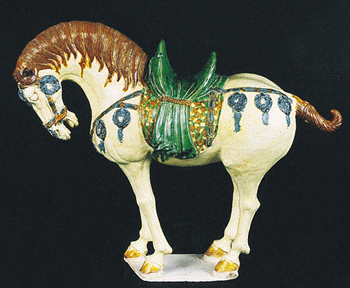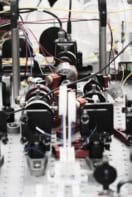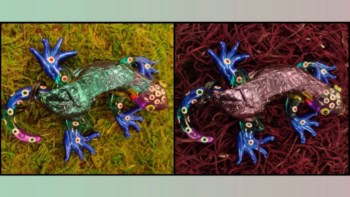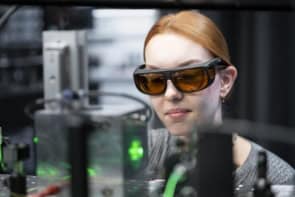Thermoluminescence testing can help tell a fake Ming vase from the genuine article, but clever forgers are also learning a thing or two about physics.

With works of art now fetching significant amounts of money at auction, it is not surprising that counterfeiters are becoming ever more skilful at producing copies of antiques. While art dealers can easily spot fake porcelain figures that are the wrong shape or have the wrong glaze, the more sophisticated copies only come to light following scientific analysis. Indeed, counterfeit pottery is so prevalent that dealers are unable to sell a piece without a certificate to show that it has passed a physics-based test known as thermoluminescence dating.
Physicist Doreen Stoneham has been testing ceramics this way for over 30 years. She joined the research laboratory for archaeology at Oxford University in 1970, shortly after one of the students there had discovered how to estimate the age of pottery and porcelain using a tiny sample drilled from the object. This form of “luminescence testing” is used in archaeology to date burnt flint and materials that have been “fired” in a kiln, such as pottery.
Previous luminescence dating involved crushing the material to find large grains of quartz, and also required knowledge of the prevalent local radiation levels for accurate measurements. Both of these requirements made it impossible to date valuable antiques using traditional techniques. However, the new “fine grain” method only needed a sample weighing about 100 mg and was sufficiently accurate (to within 20%) to tell if an antique came from a particular period or if it was a recent fake.
Stoneham recognized the commercial potential of thermoluminescence dating and began testing ceramic works of art for Sotheby’s, Christie’s and other art dealers. Looking for a new challenge, in 1997 she decided to set up her own company with her own savings. “One of the best pieces of advice I have ever been given”, recalls Stoneham, “is never to start off with a loan. You’ll be in debt for the rest of your life.” Oxford Authentication now employs two other people and tests about 3000 samples every year in a lab near Oxford. Moving away from the academic environment was a shrewd move for Stoneham, who has trebled the amount of business she used to do at Oxford University.
Almost 90% of the pottery, porcelain and stoneware that Oxford Authentication tests is Chinese. The rest is mostly a mixture of South American ceramics that are at least 500 years old, Italian Renaissance pieces from the 14th and 15th centuries, and bronzes from south-east Asia. Although thermoluminescence testing is unsuitable for metals, many bronze sculptures are made by moulding the metal around a pottery figure. Often this “casting core” remains jammed inside the bronze and can be used to authenticate the figure.
Stoneham admits that the work is fairly routine. When the company is asked to test a sample, she or one of her colleagues – including 40 representatives around the world – visit the dealer and take several samples from the antique. The powders are then brought back to the lab where they are sorted into grains 4-12 microns across and then reheated.
Thermoluminescence dating is essentially a measure of the radiation to which the ceramic has been exposed since it was fired. Radioactive elements in the sample or in the surrounding environment ionize the atoms in crystalline quartz, and the electrons become trapped by crystal defects. When the grains are heated, the electrons are released from the traps and combine with luminescence centres to produce light. Firing the pottery in a kiln resets the thermoluminescence clock to zero. Put simply, the more light that is produced when the sample is re-heated, then the older the ceramic is.
In practice, thermoluminescence testing is much more complex and the technique requires careful calibration with a known radioactive source. Young European pottery from the Renaissance period, in particular, usually requires more sophisticated tests, including measurements of the potassium content, because so many copies were made in the 19th century. If the measurements are consistent with the reported age of the antique, the dealer receives a one-page certificate of authentication.
But canny forgers have cottoned on to thermoluminescence dating too. Stoneham finds that counterfeiters incorporate pieces of genuine porcelain into areas where they think the test holes will be drilled (see figure). To get round this problem – and to identify pastiches made from an assortment of genuine and fake fragments – Stoneham and co-workers will sometimes take several samples from different parts of a piece.
Counterfeiters in China are even trying to pass the thermoluminescence test by making copies from ground-up bits of ancient clay found near the factory in Ching-te-chen where Ming pottery was produced in the 14-17th centuries. Other forgers are irradiating porcelain in an attempt to artificially age it, while others just try to fake the certificates of authenticity although “they are not doing it very successfully,” says Stoneham.
So do Stoneham and co-workers check to see how much the pieces they have tested fetch at auction? “We do look at the catalogues,” she admits. “And sometimes I see an object in the newspapers and wish I’d charged the dealer more. But at the end of the day, we just want to get at the truth.”



